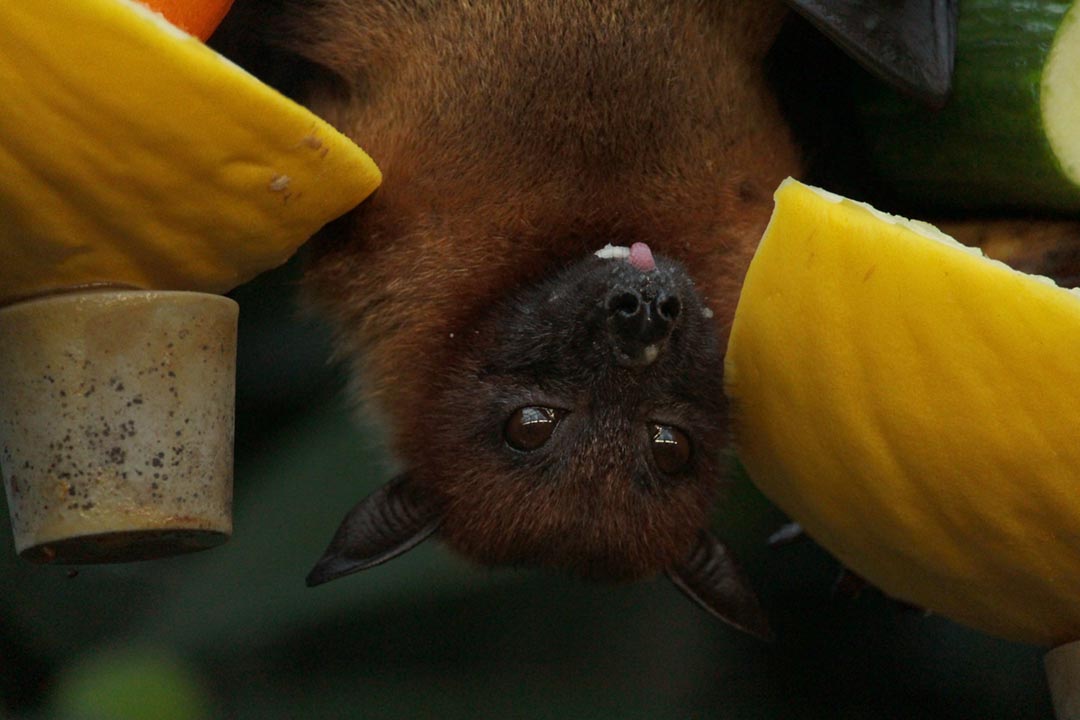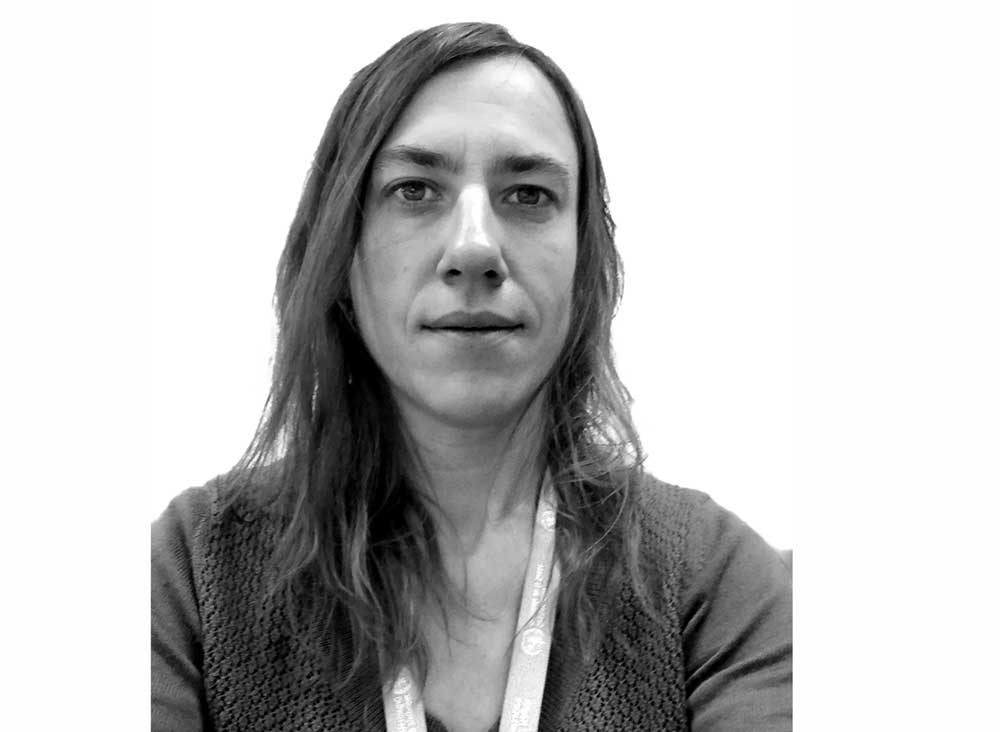How health teams are working to contain outbreaks of Marburg virus in Equatorial Guinea and Tanzania
Recent outbreaks of Marburg virus may sound scary, but improved surveillance is detecting more cases than ever before. WHO viral haemorrhagic fever expert Anaïs Legand explains what happens next.
- 19 April 2023
- 8 min read
- by Linda Geddes

Marburg belongs to a family of viruses called filoviruses, named because they look like filaments, which Ebola is also a member of. Its natural host is a species of fruit bat that spends most of its time in caves or mines. These bats can carry the virus without being sick or dying, but if people become infected – for example, if they go into the mines and spend too much time there – it can cause a severe viral haemorrhagic fever, which can be fatal.

What is the status of the current outbreaks in Tanzania and Equatorial Guinea?
As of 7 April, the current total cases in Tanzania stand at eight. Seven of them are confirmed, and one is probable, meaning that there is very good evidence that the person had a disease consistent with Marburg, but died before we could take a sample from them. We think this was the index case. Among those eight cases, five have died, one has recovered, and two are undergoing and finalising their treatments. The outbreak is affecting only one district, which is on the northern side of the country, near Lake Victoria.
What is concerning in Equatorial Guinea is that the outbreak is likely to have started in December, and that chains of transmission have gone undetected or not yet recognised.
In Equatorial Guinea too, the current count is 14 confirmed cases, of whom one has recovered, two are undergoing treatment, ten have died, and one was a positive sample where we couldn't trace the person it was taken from.
What is concerning in Equatorial Guinea is that the outbreak is likely to have started in December, and that chains of transmission have gone undetected or not yet recognised. Equally concerning is that cases have been confirmed in five districts within four provinces throughout the mainland part of the country.
Are there any clues about how these outbreaks started?
In Equatorial Guinea, we have been able to trace some cases back, through retrospective epidemiological investigation, to a fairly remote rural area in the north-eastern part of the country. We have found some evidence of some bats that are kept for food consumption, which could be one explanation, but for the time being, no samples have been collected from those bats.
In Tanzania, there is an ongoing investigation to understand whether exposure of the index case was in Bukoba district or an island in Lake Victoria.
Marburg outbreaks seem to be increasing in frequency and geographical spread. Does anyone know why?
If you look at a map of where Marburg cases have occurred, they are all within the home range of this species of bat. This year we have had two separate outbreaks in two different countries, but this doesn't necessarily mean that there is an increased frequency of Marburg cases. More likely, the capacity of countries to be able to detect cases has improved. Even ten years ago, these cases may have gone unnoticed. Most of the time, cases occur in remote places where people have no or limited access to health facilities. So, it is very difficult to know the true number of events per year.
Currently, no vaccine or specific therapeutic is approved to treat Marburg virus disease, but even without these, outbreaks can be stopped, and the chance of survival can be improved.
That said, many countries have improved their capacity, not only to report strange events occurring in remote locations, but also to be able to detect and confirm Ebola and Marburg cases through laboratory tests. We shouldn't stigmatise countries for reporting cases, we should encourage them. If more events are reported, we are better prepared to respond, and we can save lives.
Is there anything about the current outbreaks that differentiates them from previous outbreaks of Marburg virus disease?
People get infected when they come into contact with body fluids from people that are sick – their blood, stool, or vomit – or once they are dead, if they, for example, wash the body in a way that is not secure. In terms of transmission, we see no change, in terms of disease severity, there's no change, while the proportion of confirmed cases that die are in the range of what we've seen previously. Also, the genome sequence was released, meaning that the integrity of the genome was sequenced. And we've compared that with sequences that we have from humans or animals, and we see no change.
How does the World Health Organization respond to such outbreaks?
The WHO has country offices in more than 150 member states, which routinely work with health authorities to support them in surveillance activities, building laboratory capacity, and infection prevention and control. Through these surveillance activities the district team might detect, for example, a cluster of deaths associated with some specific symptoms, such as bloody diarrhoea and some signs of haemorrhage.
The most important thing is to make sure you build trust within affected communities. If the community is with you, everything is fine.
Generally, this information goes up to the Ministry of Health, and to WHO, and we will send at least one member of staff to support the first investigation. They will go to the place and ask questions about what's going on and when this started, visit people who are sick, and try to collect samples, such as blood, and send to them to a laboratory to test for whatever we think it is.
Have you read?
If confirmed for Marburg, will work together to issue a rapid risk assessment, which will factor in all the information to date, and assign a level of risk. In the case of Marburg or Ebola, we will immediately implement our Incident Management System, which is a structure that will help us to coordinate all efforts that need to be provided to the country, such as the deployment of additional staff, the provision of equipment including drugs and personal protective equipment (PPE). All of that happens within the first 24 hours or so.
But the response to a Marburg outbreak hinges on very good engagement and coordination with national authorities. An important first action is engagement at the local level with health and administrative authorities, political and religious leaders, and influential groups to explain the situation and to try to have them on board with whatever interventions could be deployed. There is no outbreak to be controlled if you don't have the community with you.
What happens next to contain the outbreak?
We will set up several pillars of activities, starting with what we call surveillance and epidemiology, to try and understand the chain of transmission, identify contacts of the people who are sick, and use their reports of symptoms to isolate and care for them as early as possible.
There is community outreach to be done to convince people to seek treatment early if they're sick, first to reduce the risk of transmission within the community, but also because the earlier we can initiate formal supportive treatment, the greater their chances of survival.
We will work to set up from scratch, or support the national laboratory to establish, a testing lab as close as possible to the outbreak, as well as a system for transporting samples to it as quickly as possible. There is also very specialised logistical work to be done to make sure that we have the cars, the ambulances, the electricity, and so on to make any intervention possible.
A huge piece of work is ensuring that health facilities in affected districts have adequate infection prevention and control procedures, including making sure that health staff have access to basic PPE, so that if a suspected patient comes, they don't infect themselves, and there is no transmission from one patient to another.
Another area is working with the community to identify the funeral practices that may be a risk for transmitting the virus, and replacing them with something that is safer, but still culturally acceptable. In many places, a basic thing is to wash the body when someone dies, but there may be body fluids present that contain the virus.
How is the disease treated?
Currently, no vaccine or specific therapeutic is approved to treat Marburg virus disease, but even without these, outbreaks can be stopped, and the chance of survival can be improved. There are lots of interventions that have made our response better. For example, during the 2014 Ebola epidemic, because of the size of the outbreak, people were sent to treatment centres, but there were so many patients that it was very difficult for the medical staff to provide supportive treatments.
Since then, an NGO called the Alliance for International Medical Action has developed the CUBE, a portable single patient room with transparent plastic walls, where medical teams can provide supportive care, including monitoring their electrolytes and administering solutes, simply, from outside the unit. We are now adapting the design of the treatment centre to allow for better care, and for the patient to be able to see family in a safe way, which is very important.
We also have better diagnostic tests that can be performed closer to the patient, which is a huge improvement – especially when you consider that we are dealing with biosafety level four agents, which are highly contagious.
What are the biggest challenges when dealing with outbreaks of viral haemorrhagic fevers like Marburg or Ebola?
It varies from one context to another. There may be operational challenges; sometimes you arrive and there is no water, there is no electricity, or there may be a health facility but the medical staff don't have drugs or equipment, and they may be very far away in the forest. But the most important thing is to make sure you build trust within affected communities. If the community is with you, everything is fine.
We are also very dependent on how well the community trusts the local health authorities. The challenge is never the sick people, or their contacts. The challenge always comes when you've missed several of the steps from the beginning, starting with engaging these communities.
Anaïs Legand is a technical officer in the World Health Organization's Viral Haemorrhagic Fevers unit.








